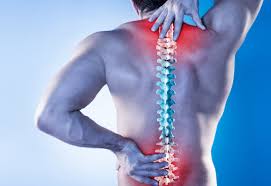|
L |
ligot dubois (@ligot95444) |

Welcome to our comprehensive guide on how to relieve low back pain through yoga. Back pain is a prevalent issue affecting millions of individuals worldwide. It can significantly impact one's quality of life, hindering daily activities and causing discomfort. Yoga offers a holistic approach to addressing low back pain by improving flexibility, strength, and alignment. In this guide, we will explore various yoga poses, techniques, and tips tailored to alleviate low back pain effectively.
Carisol 350mg is the main ingredient. Its powerful formulation, which includes the active ingredient carisoprodol, addresses the underlying causes of pain and provides a comprehensive solution for people looking for relief from a variety of low back pain issues.
Before delving into yoga practices, it's essential to understand the common causes of low back pain. Factors such as poor posture, sedentary lifestyle, muscle imbalances, and injury can contribute to discomfort in the lower back region. Yoga serves as a gentle yet powerful tool to address these underlying issues and promote healing.
Yoga offers a myriad of benefits for individuals suffering from low back pain:
Yoga incorporates stretching exercises that help increase flexibility in the spine, hips, and hamstrings. Enhanced flexibility reduces stiffness and tension in the lower back, alleviating pain and discomfort.
Pain o soma 350mg its potent muscle relaxant properties, it works swiftly to alleviate discomfort and restore flexibility, allowing you to get back to living life to the fullest. Say goodbye to muscle-related woes and embrace the comfort and relief offered by Pain O Soma 350mg.
Many yoga poses engage the core muscles, including the abdominals and back muscles. Strengthening these muscles provides stability and support to the spine, reducing the risk of injury and promoting proper alignment.
Chronic stress can exacerbate low back pain by causing muscle tension and inflammation. Yoga practices such as deep breathing and meditation promote relaxation, reducing stress levels and alleviating tension in the back muscles.
Yoga emphasizes proper alignment and body awareness, which can help correct posture imbalances that contribute to low back pain. By practicing yoga regularly, individuals can develop better posture habits and prevent future episodes of discomfort.
Prosoma 350mg [Carisoprodol] is the active component of the medication. It is categorized as a muscle relaxant and is used to alleviate pain in the muscles, including spasms. Muscle relaxation is the outcome of carisoprodol's action on the central nervous system, which affects nerve transmission.
Now, let's explore some yoga poses specifically targeted to alleviate low back pain:
While yoga can be beneficial for low back pain, it's essential to practice safely to avoid exacerbating existing injuries or discomfort:
Incorporating yoga into your routine can be a powerful strategy for alleviating low back pain and promoting overall well-being. By practicing yoga poses that focus on flexibility, strength, and relaxation, you can address the root causes of discomfort and cultivate a healthier, pain-free back.
Remember to approach your practice with mindfulness and patience, allowing yourself to progress at your own pace. With dedication and consistency, you can experience significant improvements in your back pain and enjoy the numerous benefits that yoga has to offer.